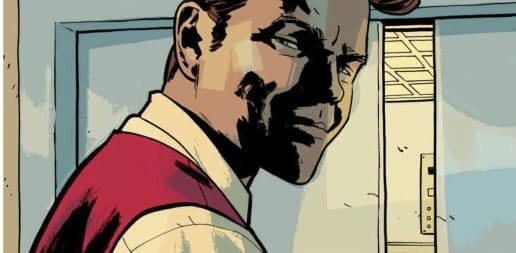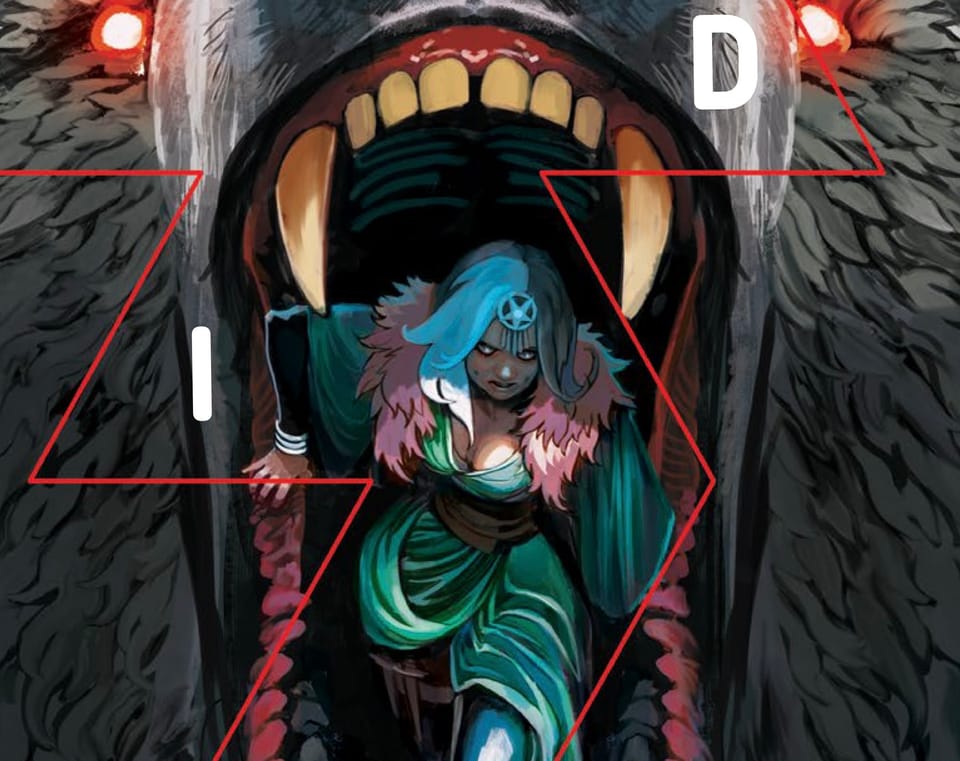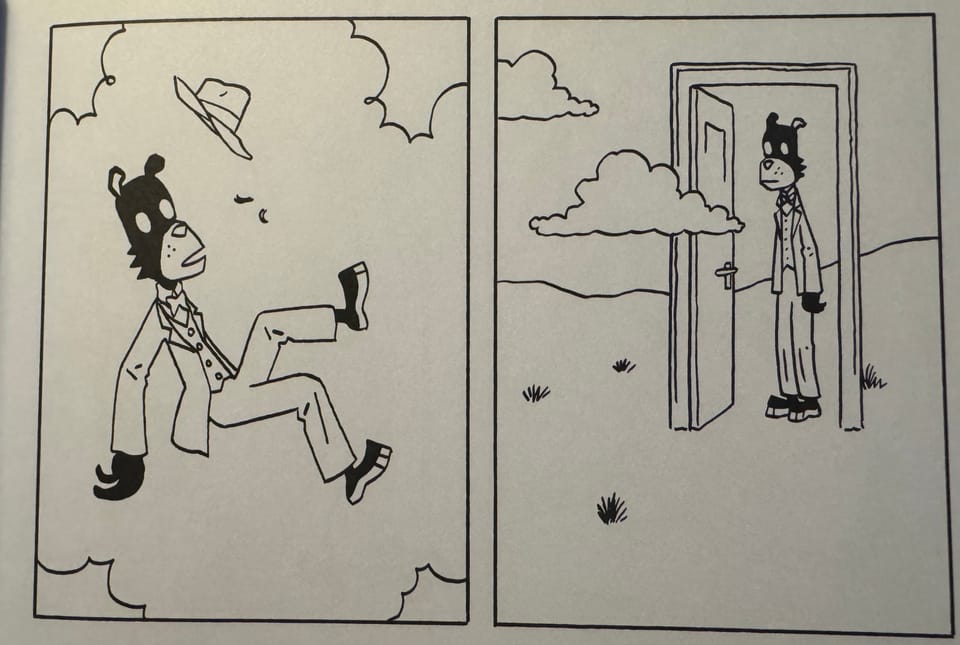The Kids Aren’t Alright-- Scott Snyder and Nick Dragotta's Absolute Batman Volume One: The Zoo
Nick Dragotta jumps between the child-like innocence of childhood to the darkness of modern existence where it seems like nothing means anything anymore.
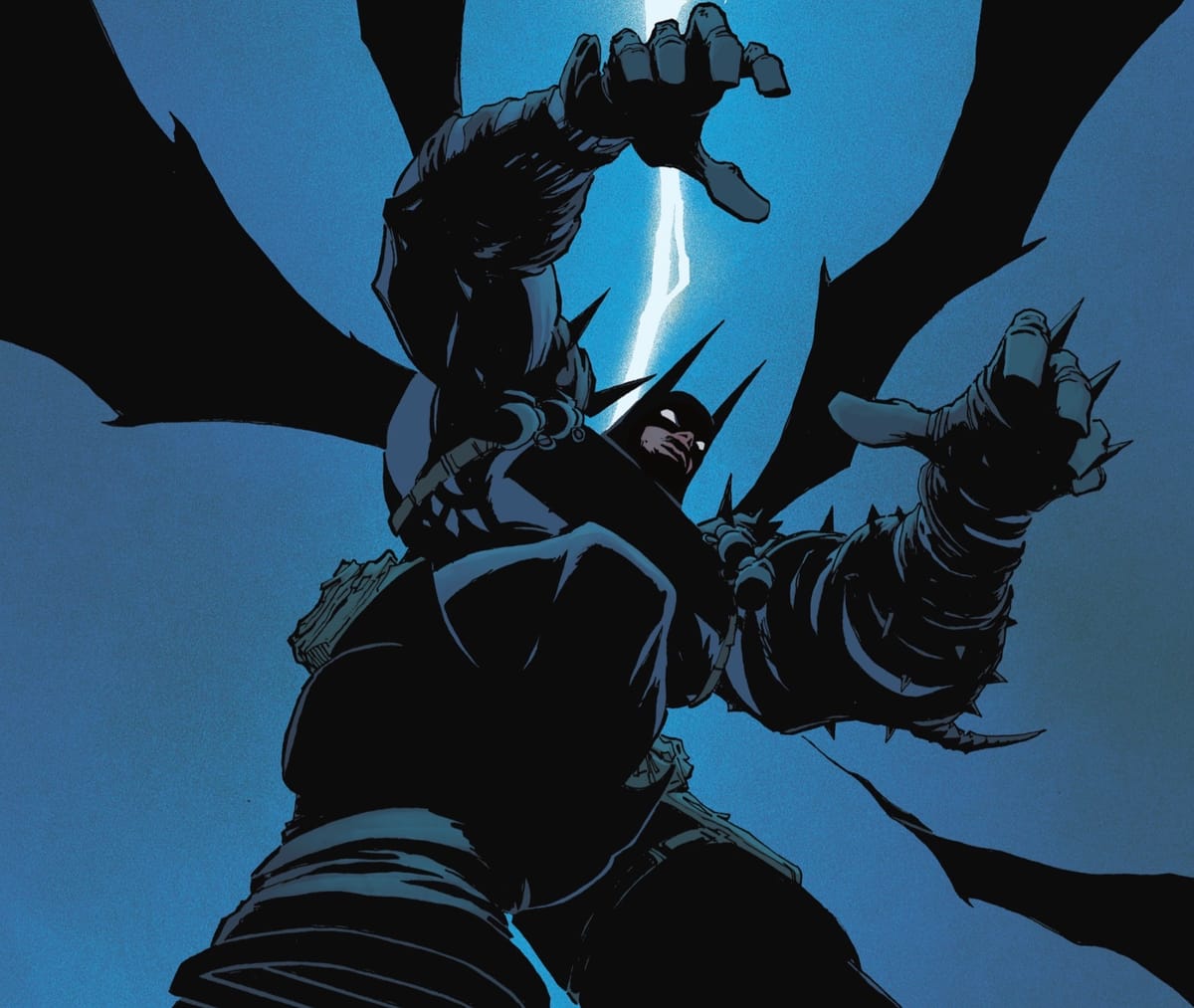
Absolute Batman Volume One: The Zoo by Scott Snyder, Nick Dragotta, Gabriel Hernandez Walta, Frank Martin, and Clayton Cowles (DC Comics; feature image by Nick Dragotta & Frank Martin)
Bruce Wayne is not a serious man. He may think he is, fighting a war against Gotham City crime but there’s nothing in Absolute Batman Volume One: The Zoo to suggest that Wayne has any idea of how to engage in the world other than lashing out at it. That’s what his alter ego “Batman” is designed to do— meet violence with more violence. That’s clear from the first chapter of the book, where Wayne’s bat-shaped chest emblem transforms into an axe that he uses to slice through an attacking opponent’s wrist. “I hear they can reattach them sometimes. There’s a hospital three blocks south of here. Or is it East? I can’t seem to remember all of a sudden… but I’d run.” Some real vigilante attitude right there. Scott Snyder and Nick Dragotta crib 80+ year old ideas and characters, using them to dive into a 21st century Gotham City, a city on the verge of chaos that needs someone to pull it back from the brink. But is Bruce Wayne the hero needed to save the city?
Scott Snyder is no stranger to Gotham City, having been its architect with the New 52 launch so long ago. But this Absolute Bruce Wayne is something new, not a man of privilege but a child of tragedy. His father was killed protecting his young students (Bruce among them) at a shooting at the zoo during a class trip that Bruce won his class by designing a bridge based on… You guessed it… the structure of a bat’s wings. The ghost of Thomas Wayne, a school teacher, hangs heavy over his son Bruce, even many years later when Bruce should be a man. Snyder and Dragotta find many ways to tie past tragedies to the current events, where the zoo becomes a metaphor for Gotham, a setting of a lot of promise but built on chaos and tragedy. This kind of city seems like the perfect target for The Black Mask, a crime lord who wants Gotham citizens to rise against the local government to prime the city for whatever is coming next. This is the city that Alfred Pennyworth, an agent for a shadowy organization, rolls up into on his motorcycle. Pennyworth is the wildcard; his motivations for fighting are somewhere between Wayne’s and The Black Mask’s.
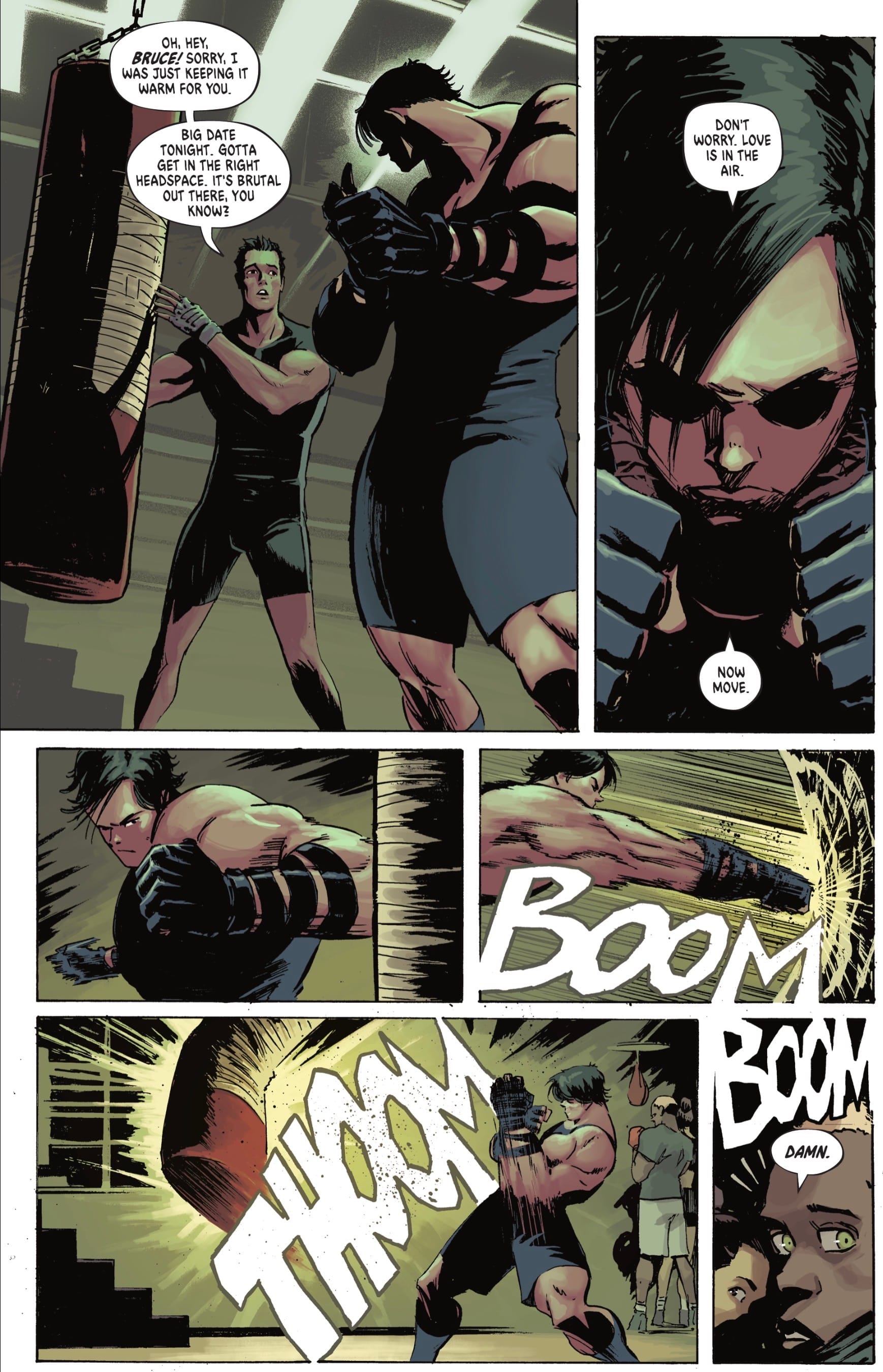
As a child, Bruce was there when his father died; he’s the reason his father was at the zoo to begin with. With all Bruce Wayne stories, that’s the point where any emotional development starts and stops— frozen in that point of time of his parent’s death. Dragotta even draws Bruce Wayne as an overgrown boy— big, muscular, but with a little boy’s face, a little boy’s eyes. He may be the big bad Batman but he’s still his momma’s little boy. That’s the key characteristic of this Batman; he’s just a kid no matter how old he is. He’s travelled the world, learned all there is about Gotham, put together an impressive arsenal of weapons and tools but Bruce Wayne is acting out the only way he knows. He’s lashing out at the evil that took his father from him.
Dragotta gives Bruce and his friends a childlike hope for the world. All of these kids grew up in the shadow of that zoo shooting and his friends tried to be there for Bruce afterwards. Bruce did what he could to push them away but for one reason or another, they’ve tried to stick by him. While they’ve all gone on to have their own lives, some on the side of law and others on the other side of law. But they’ve stuck together over the years and have tried to support their friend. Dragotta jumps between the child-like innocence of childhood to the darkness of modern existence where it seems like nothing means anything anymore. You have this group of kids who love each other in this world that wants to divide people and make everyone look out just for themselves and not for others. That’s the main struggle in Snyder and Dragotta’s story; do we rise together or fall separately?
This is a baby-faced Bruce Wayne. Our first real encounter with Bruce is at Croc’s Gym, a boxing joint owned by one of those childhood friends Waylon Jones. A young man dances around a punching bag, throwing punches and kicks at it. “No fear. No weakness. Tonight you are a…” he psyches himself up the way a man about to face the unknown night may. But this isn’t our hero, just another Gotham City schmuck who gets out of Bruce’s way. Bruce is big, about twice the size of the man. But even in the little bit we can see, he has a soft face. That’s the way that Dragotta draws Bruce. It’s a sharp contrast to the Batman, a dark armored character who’s very costume contains all kinds of weapons. The only thing that Bruce and Batman have in common is their size. One is a creature of the night and the other is a boy in a man’s body.
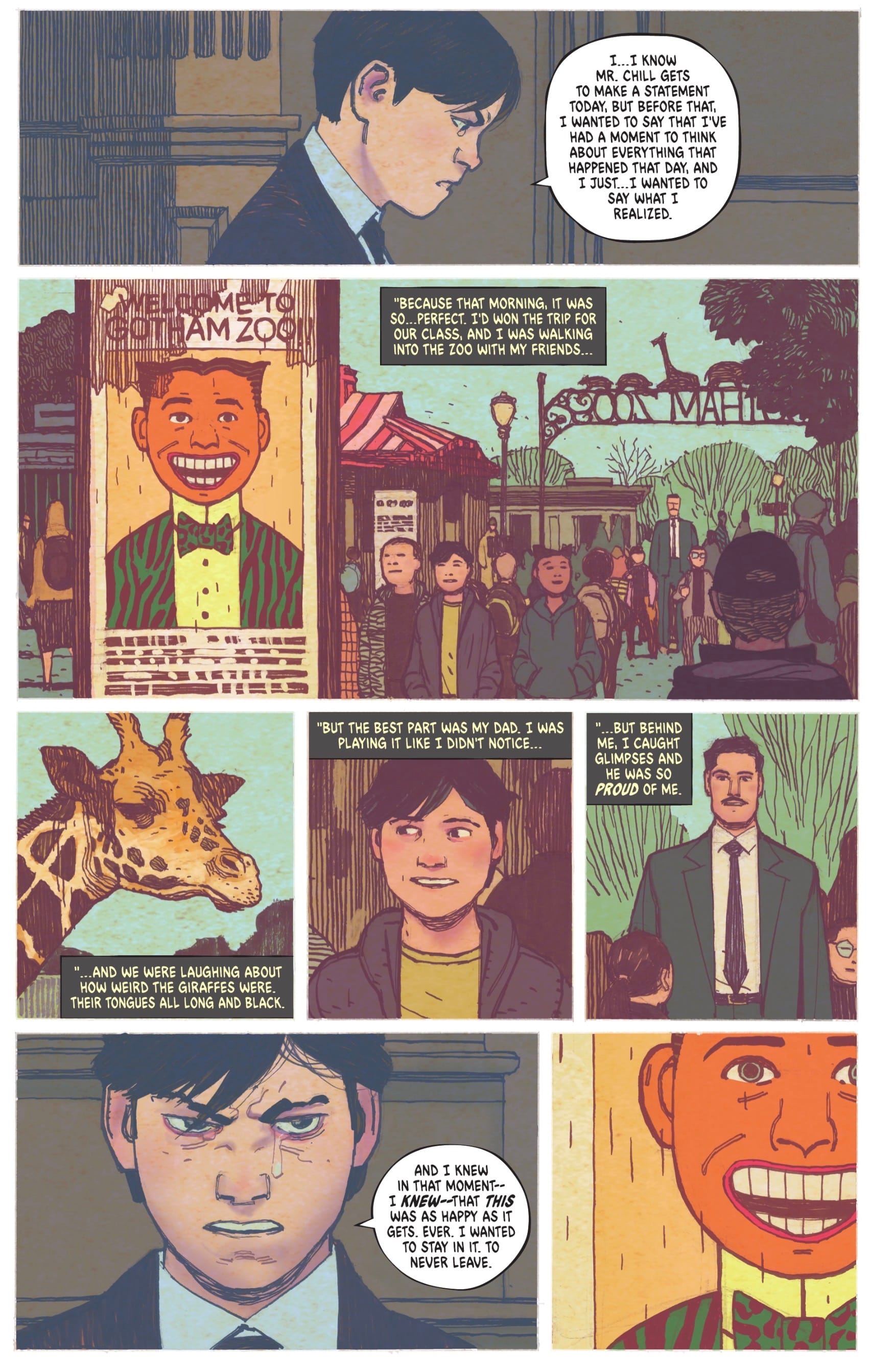
The fourth issue, drawn by Gabriel Hernandez Walta is largely flashbacks to Bruce’s first attempts at being Batman. That first stab at trying to be something that Gotham needs is a fascinating cross between Bob Kane and Bill Finger’s original designs and Nosferatu, showing Wayne trying to make this idea of Batman in his head into something concrete and real. But more than that, it focuses on Bruce’s bridge design that one him and his class the zoo trip as well Bruce’s statements at the trial of his father’s killer, Joe Chill. More than other parts of the story, it highlights just how much of Bruce’s drive is tied into and still trapped by that childhood trauma. In the middle of this larger story about the fight for Gotham, Snyder and Hernandez Walta tell this story about Bruce’s ways now and then of dealing with what happened to him and his father. This part of the story establishes what Bruce is searching for.
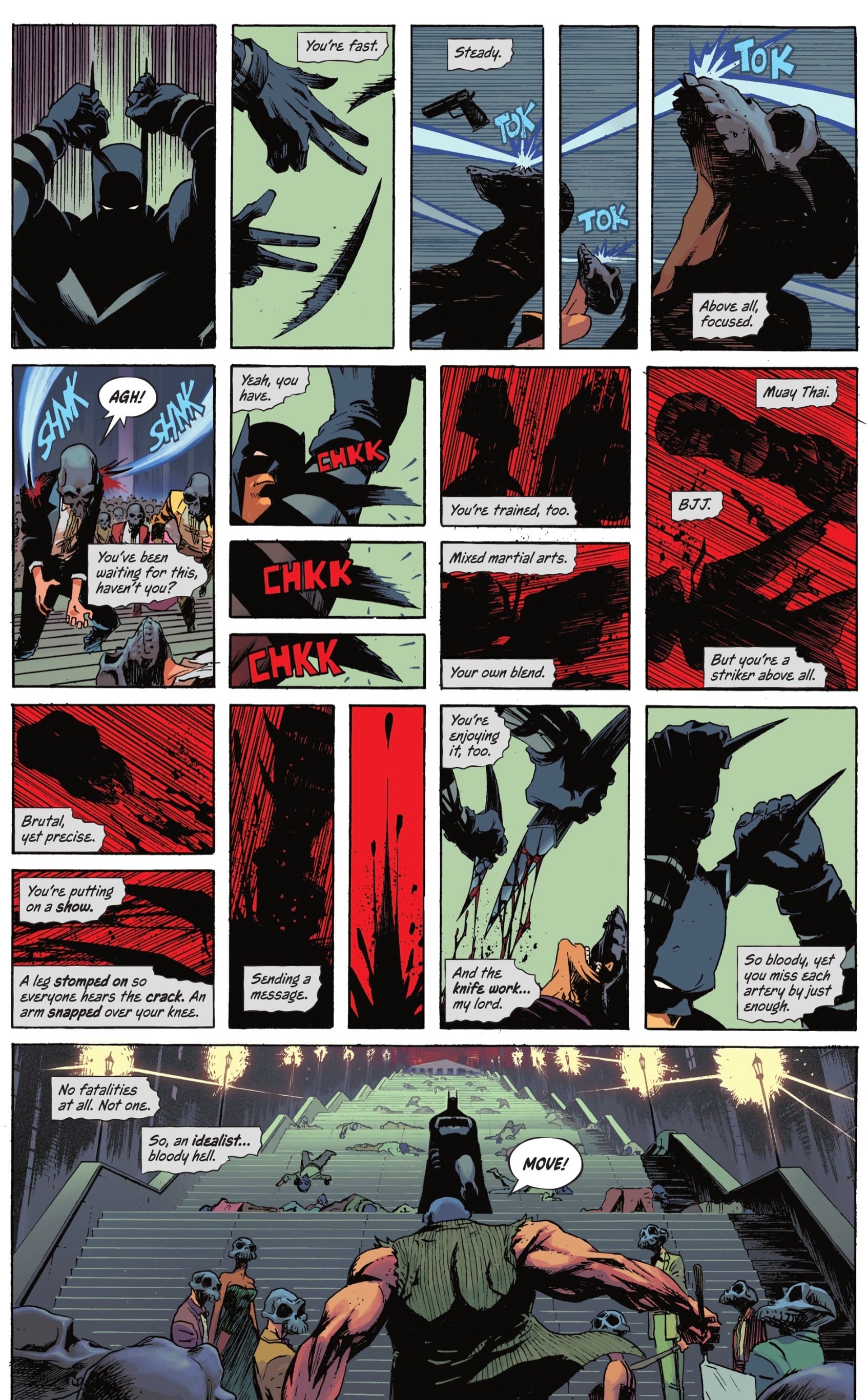
Pennyworth has a fascinating role here; he clearly has agendas, personal and professional. He’s sent to Gotham to deal with Black Mask but for far different and unknown reasons than why Bruce is. Pennyworth also has his history with Gotham; it’s where his daughter is and maybe this is his chance to protect her from whatever is coming. Bruce is both an opportunity and a challenge for Pennyworth, an ally and a roadblock. So like the reader, Pennyworth is trying to figure out this kid, just like the reader is. Bruce is lashing out but Pennyworth seems to have something that he’s fighting for in Gotham City. Maybe that’s the difference between Pennyworth and Wayne. Pennyworth has lived and fought; he’s got stakes in what happens in Gotham where Bruce is trying to fix something that happened years and years ago, something that the city and its citizens moved on from a long time ago.
Ultimately, Pennyworth pegs Bruce Wayne correctly when he calls him an “idealist” the first time he watches Wayne in action. Wayne sees Gotham in black and white, right and wrong— when everyone else— Black Mask, his mother Martha Wayne, Mayor Gordon, and Pennyworth— sees the shades of the city, the tradeoffs needed to keep a city and its people together. Bruce Wayne, Batman, Idealist, Child. In Absolute Batman Volume One: The Zoo, Snyder and Dragotta create a Bruce Wayne who’s not as formed as others we know but also isn’t as jaded as they are. He’s experienced pain and it’s given him the mission to take on that kind of pain for others. That’s what he’s fighting for in this Gotham. It’s a simplistic view of what a Batman could be but it’s one that maybe we need. It’s not about all of the sidekicks, the gadgets, the allies that one has but it’s about the belief and the drive that a vigilante has that could make him into a hero.



